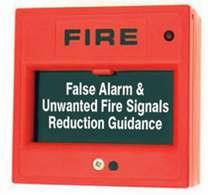Reduce Unwanted Alarms by Arindam Bhadra
“Fire Alarm! – Fire Alarm? – meh, probably just another false alarm....”
This is the unfortunate common perception of automatic fire alarm systems - very few people have personal experience of a major fire but almost everybody has experienced a false alarm at some time in their lives. As well as being a considerable drain on fire authority resources, this causes business disruptions (leading to a loss of productivity) and reduces the confidence of the general public in fire alarms. A false alarm is a fire alarm signal from a fire detection or fire alarm system which is not caused by a fire. Examples include: • A fire-like phenomenon (e.g. a smoke machine triggering a smoke detector) • Accidental damage to the system • Environment effect • Inappropriate human action (e.g. malicious manual call point activation) • Equipment malfunction 38
It is important that the detector's location and performance are correctly matched to ensure optimum fire detection ability with minimal risk of unwanted alarms. Selecting Detector Types to Limit Unwanted / False Alarms - There are many different types of detector, which operate on different sensing principles and offer specific performance related to the detection of fires as well as their immunity to certain sources of unwanted alarm. Therefore, it is important to select the correct detector for the application. Variable Detector Performance - Detector performance can be adjusted, usually at the control panel, so as to reduce the risk of unwanted alarms for given periods. For example: • A smoke/heat detector may be switched to a heat only mode • Alarm verification delays may be enabled • Smoke detector sensitivity may be reduced February 2021 - www.visionmediahitech.com



















